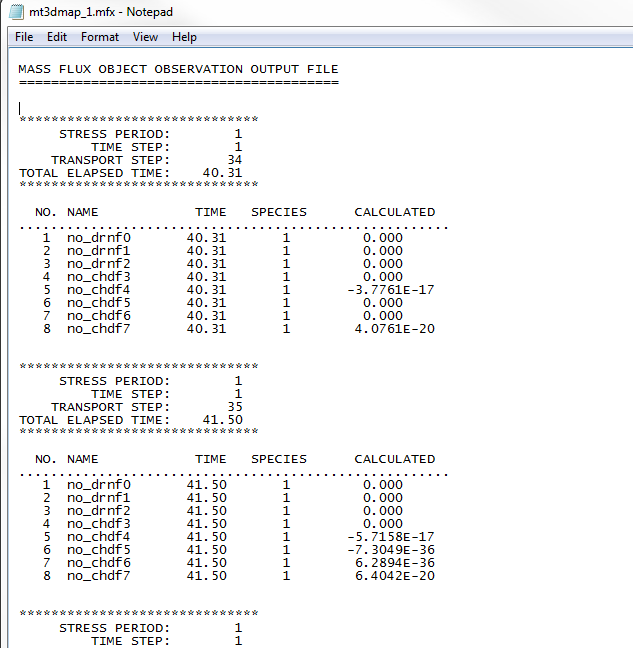We use cookies to make your experience better. To comply with the new e-Privacy directive, we need to ask for your consent to set the cookies. Learn more.
Using Mass Flux Computations
Are you wanting to compute the mass flux for a group of MODFLOW boundary conditions? The mass flux is the rate of mass flow per unit area, or mass per time per area. Computing this can quantify the strength of contaminants at a particular location in your model.
Use the MT3DMS or MT3D-USGS model to compute the mass flux at specific location. To do this:
- First create and run a MODFLOW model.
- Then create an MT3DMS or MT3D-USGS simulation with all relevant parameters set and contaminant species defined.
- Make certain the Transportation Observation Package is turned on in the MT3DMS/RT3D Packages dialog.
- If it is not already in the model, create a conceptual model with the MT3DMS/MT3D-USGS defined species.
- Create a map coverage with the observation point option for the species turned on.
- Create points on the coverage at the locations where you want to to observe mass flux.
- Assign these points as observation points and enter attributes as needed.
- Access the Transport Observation Package dialog through the MT3DMS or MT3D-USGS menu.
- Turn on the Compute mass flux at source/sinks option.
- Run the model.
MT3MDS/MT3D-USGS will compute the mass flux at each observation point. The computation is done using the units set for the input concentration. Typically, these are the units used for the display projection in GMS. So if your project is using U.S. survey feet, then your mass flux will be calculated as ft^3*mg/L. If varying units are used in the concentrations, then conversions must be done before calculating the mass flux.
The mass flux will be contained in a dataset file with the “.mfx” file extension. This file can be opened using any text editor. The file will show the calculated mass flux for each time step and for each source or sink included in the model.

Hopefully, you now understand a little more about calculating mass flux in GMS. Try out mass flux calculations and other features in GMS today!


